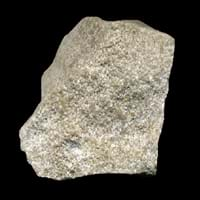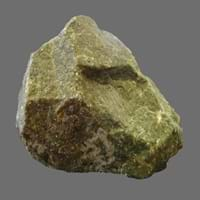Definition
Oolite is a sedimentary rock formed from ooids, spherical grains which are composed of concentric layers of calcite
Dunite is a green to brownish coarse-grained igneous rock mainly consisting of olivine
Origin
Unknown
New Zealand
Discoverer
Unknown
Ferdinand von Hochstetter
Etymology
From oo- + -lite, after German Oolit. A rock consisting of fine grains of carbonate of lime
From the name of Dun Mountain, New Zealand, + -ite1
Class
Sedimentary Rocks
Igneous Rocks
Sub-Class
Durable Rock, Medium Hardness Rock
Durable Rock, Medium Hardness Rock
Other Categories
Fine Grained Rock, Opaque Rock
Coarse Grained Rock, Opaque Rock
Texture
Clastic or Non-Clastic
Phaneritic
Color
Black, Blue, Brown, Cream, Green, Grey, Pink, Red, Silver, White, Yellow
Dark Greenish - Grey
Durability
Durable
Durable
Scratch Resistant
Yes
Yes
Appearance
Rounded and Rough
Rough and Shiny
Interior Uses
Decorative Aggregates, Flooring, Interior Decoration
Decorative Aggregates, Interior Decoration
Exterior Uses
As Building Stone, As Facing Stone, Garden Decoration, Paving Stone
As Building Stone, As Facing Stone, Garden Decoration, Paving Stone
Other Architectural Uses
Not Yet Used
Curbing
Construction Industry
Cement Manufacture, Cobblestones, Landscaping
As Dimension Stone, Cement Manufacture, Construction Aggregate, for Road Aggregate, Making natural cement, Raw material for the manufacture of mortar
Medical Industry
Not Yet Used
Not Yet Used
Antiquity Uses
Artifacts
Artifacts, Monuments, Sculpture, Small Figurines
Commercial Uses
Creating Artwork, Jewelry, Used in aquariums
Creating Artwork, Gemstone, Jewelry, Source of Chromite, Platinum, Nickel and Garnet, Source of Diamonds
Types
Not Available
Not Available
Features
Available in lots of colors, Generally rough to touch, Very fine grained rock
Constitutes upper part of the Earth's mantle, Generally rough to touch, Host rock for Diamond, Is one of the oldest rock
Archaeological Significance
Monuments
Not Yet Used
Used
Famous Monuments
Not Applicable
Data Not Available
Sculpture
Not Yet Used
Used
Famous Sculptures
Not Applicable
Data Not Available
Figurines
Not Yet Used
Used
Formation
Oolites form when layers of calcite are deposited around a sand grain or fossil piece and are rolled around in calm water, which makes them round.
Dunite is a plutonic ultramafic igneous rock consisting almost m olivine. It can be formed in two ways.
Mineral Content
Calcite, Chert, Clay, Dolomite, Quartz, Sand, Silt
Amphibole, Chromite, Garnet, Magnesium, Olivine, Phlogopite, Plagioclase, Pyroxene
Compound Content
Aluminium Oxide, Ca, NaCl, CaO, Iron(III) Oxide, FeO, MgO
Ca, CaO, Fe, Potassium, Silicon Dioxide, Sodium, Titanium Dioxide
Types of Metamorphism
Not Applicable
Burial Metamorphism, Cataclastic Metamorphism, Contact Metamorphism
Types of Weathering
Biological Weathering, Chemical Weathering, Mechanical Weathering
Biological Weathering, Chemical Weathering, Mechanical Weathering
Types of Erosion
Chemical Erosion, Coastal Erosion
Coastal Erosion, Glacier Erosion, Water Erosion
Grain Size
Fine Grained
Coarse Grained
Fracture
Conchoidal
Irregular
Porosity
Less Porous
Less Porous
Luster
Pearly to Shiny
Shiny
Compressive Strength
Not Available
Cleavage
Non-Existent
Imperfect
Specific Gravity
Not Available
3-3.01
Transparency
Opaque
Translucent to Opaque
Density
Not Available
2.84-2.85 g/cm3
Specific Heat Capacity
Not Available
Resistance
Heat Resistant, Wear Resistant
Heat Resistant, Pressure Resistant, Wear Resistant
Deposits in Eastern Continents
Asia
Brunei, India, Indonesia, Malaysia, Singapore, Thailand, Vietnam
China, India, Indonesia, Kazakhstan, Russia, South Korea, Thailand, Turkey
Africa
Cameroon, Chad, Ghana, Kenya, Malawi, Sudan, Tanzania, Togo, Zambia, Zimbabwe
Morocco, South Africa
Europe
United Kingdom
Finland, France, Georgia, Germany, Great Britain, Italy, Kazakhstan, Netherlands, Norway, Spain, Switzerland, Venezuela
Others
Not Yet Found
Not Yet Found
Deposits in Western Continents
North America
USA
Canada, USA
South America
Colombia
Argentina, Brazil, Colombia, Ecuador, Venezuela
Deposits in Oceania Continent
Australia
Adelaide, New Zealand, Queensland, Tonga, Victoria, Yorke Peninsula
New Zealand, Western Australia
All about Oolite and Dunite Properties
Know all about Oolite and Dunite properties here. All properties of rocks are important as they define the type of rock and its application. Oolite belongs to Sedimentary Rocks while Dunite belongs to Igneous Rocks.Texture of Oolite is Clastic or Non-Clastic whereas that of Dunite is Phaneritic. Oolite appears Rounded and Rough and Dunite appears Rough and Shiny. The luster of Oolite is pearly to shiny while that of Dunite is shiny. Oolite is available in black, blue, brown, cream, green, grey, pink, red, silver, white, yellow colors whereas Dunite is available in dark greenish - grey colors. The commercial uses of Oolite are creating artwork, jewelry, used in aquariums and that of Dunite are creating artwork, gemstone, jewelry, source of chromite, platinum, nickel and garnet, source of diamonds.










